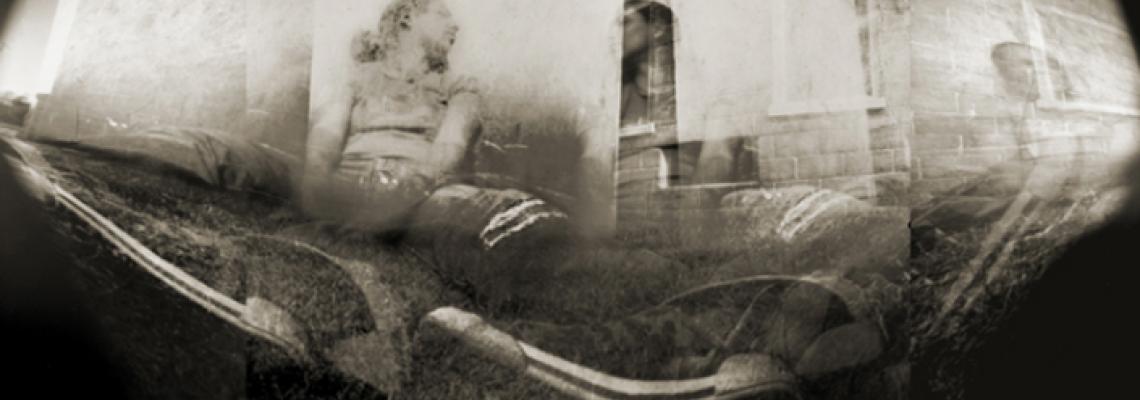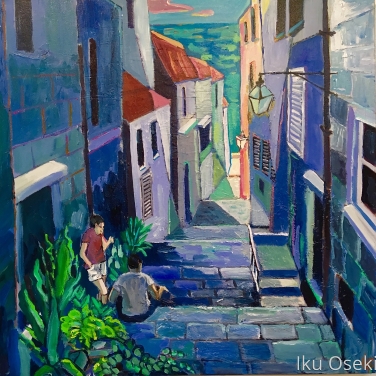Iku Oseki was born Tokyo, Japan in the year of the monkey—an auspicious sign that it said to bring gifts of creativity and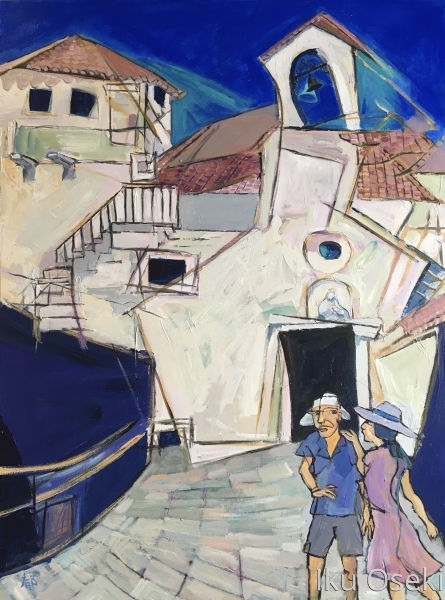 cleverness… which is very apropos considering Oseki has had a life-long career as an artist. As a Mass Art grad in the 80’s, Iku has worn many hats— a freelance illustrator, stage set designer, and graphic designer for years after that. In 1999, she began to teach art for school aged children at the Fayerweather School in Cambridge and enjoys the flexibility that the summers bring to focus on her personal art.
cleverness… which is very apropos considering Oseki has had a life-long career as an artist. As a Mass Art grad in the 80’s, Iku has worn many hats— a freelance illustrator, stage set designer, and graphic designer for years after that. In 1999, she began to teach art for school aged children at the Fayerweather School in Cambridge and enjoys the flexibility that the summers bring to focus on her personal art.
For her own practice, she works out of the Vernon Street artist building in Somerville. Her expressive and unique style emerged in 2010 during a sabbatical when she began exploring the various aspects of blind contour drawing—an art exercise, where an artist draws the contour of a subject without looking at the paper.
About her process:
You have a very distinctive and unique style. Can you elaborate more on what drew you to this process and what it entails?
When I started to paint in 2010 for the first time since my art school days, I decided to sketch a few household items, such as eggbeater and vacuum cleaner, using the blind contour technique. When you use this technique, you are looking at an object or scene attentively, but you do not look at the actual drawing you are making. This way, every time a new drawing comes out differently even when you are looking at the same eggbeater, for example; you get several interesting versions of the same scene. I really liked the effect and the curiously wandering lines it created. So much so that I have been using it almost always in sketching new pieces even for just a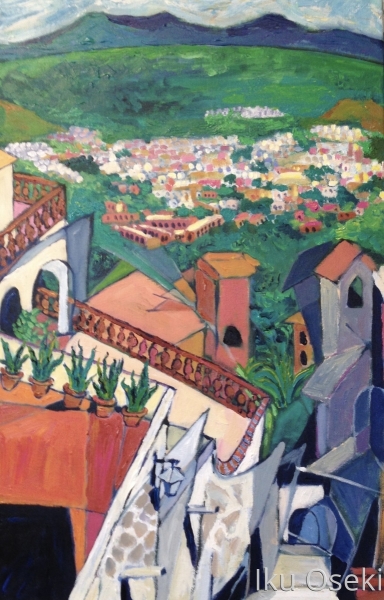 portion of the whole painting.
portion of the whole painting.
Do you find this to be an accessible technique that artists could use at any level or stage in their practice?
It is a wonderful technique to free you from overly obsessing with accuracy and realism. I do it very slowly, and it gives me a chance to observe subtle nuances of linear movements in the objects /scenes I’m looking at. I particularly love doing it with human faces. Although I’m not drawing realistically, this technique seems to capture some underlying subtle expressions quite well.
You are also an art teacher. Do you find that this exercise works for school-aged children as well as adults?
Students older than nine or ten really enjoy this exercise. They think the results are wildly crazy, and they laugh and share their results with their peers pretty excitedly. Most of the time in a classroom setting, the process ends there without using the result as the base for further investigation or development. For me, and for adults and older students, the real fun starts when you use the crazy results and turn it into finished drawing or painting by accentuating or modifying some lines and eliminating unwanted, too-crazy lines.
Artist Statement
I travel a lot, due to the chunks of school vacation time I have as a teacher. For instance, I have been visiting a quaint town in Mexico for more than twenty years during my summer break and also have visited South America, Europe, and the East. Many of my paintings were done in Mexico. I take photos of scenes where local people are engaged in some activities and paint from them. Here, in this exhibit, I have three pieces from Croatia, two from Mexico, and one f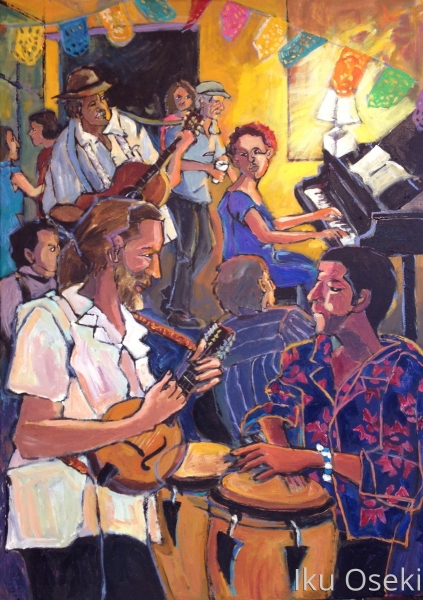 rom New Orleans.
rom New Orleans.
I am always interested in human emotions, activities and interactions; capturing a moment when people are intensely focused on an activity or a thing. If you just take a picture of these moments, yes, you have captured their story; however, when I try to paint these moments, they become something way more than what originally pulled me into the scene. At the end of the day, it’s the people that always inspire me to paint--their demeanor, the surrounding atmosphere, their gaze. All these things capture my imagination and have led to having imaginary conversations with them as I paint. The process of painting allows me to discover all sorts of nuances of the scene, the emotions involved, and emerging stories. I am not trying to document the scene, but am recreating a fictional scene with my version of the story.
Artist Contact Info:
[email protected]
www.ikuoseki.com
Facebook: Iku Oseki /ART
Instagram: ikuosekipaints
About the Inside-Out Gallery
Initiated in 2009, The Inside-Out Gallery is located in the CVS Window in Davis Square, a unique space that allows the public to view an eclectic array of works from artists and local organizations each month. The mission of the Somerville Arts Council is to cultivate and celebrate the creative expressions of the Somerville community. Through innovative collaborations and quality programming we work to make the arts an integral part of life reflective of our diverse city.
